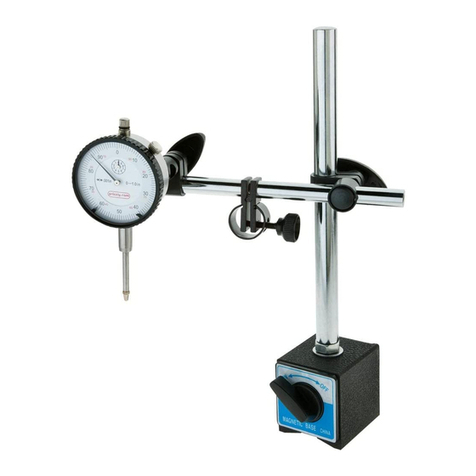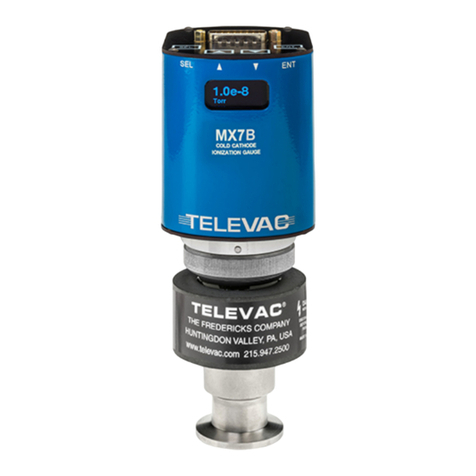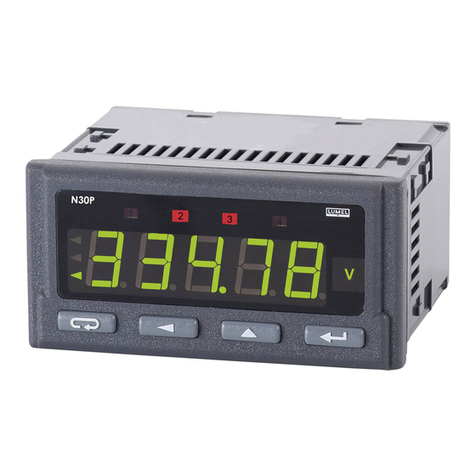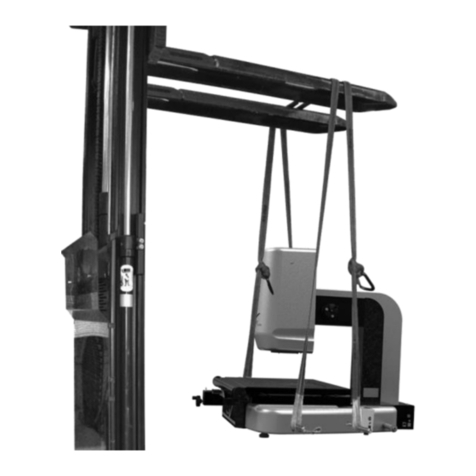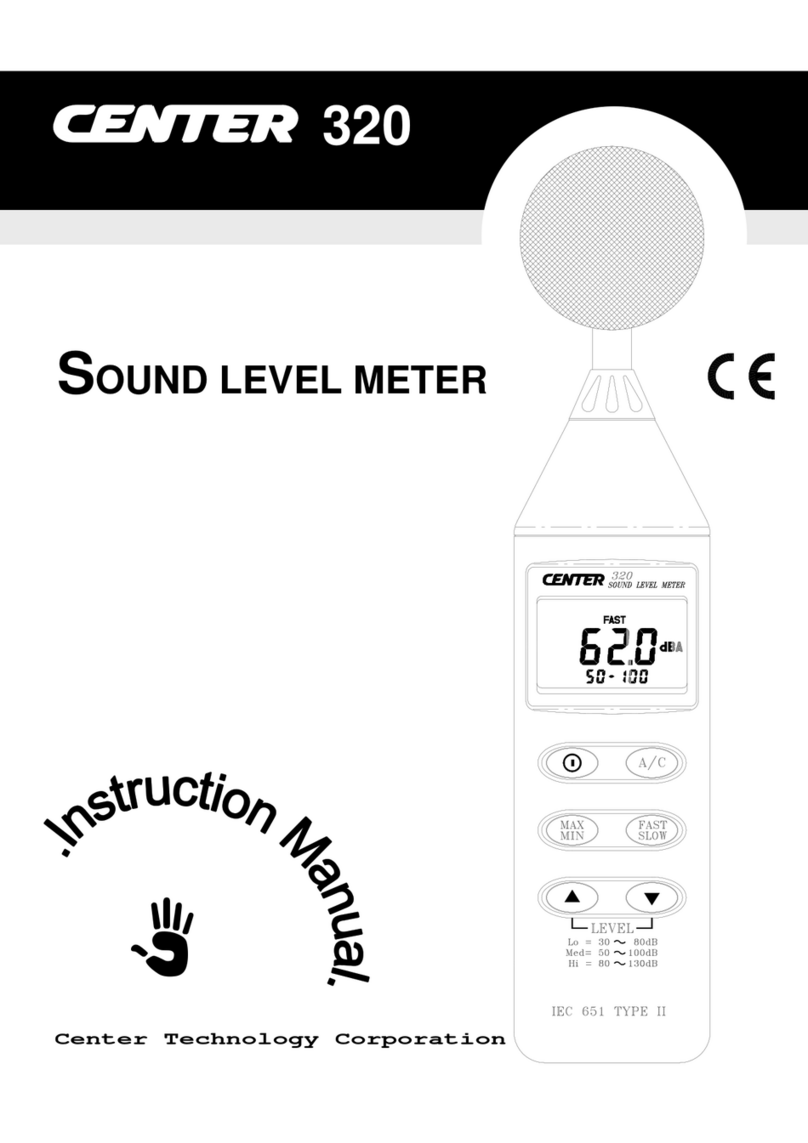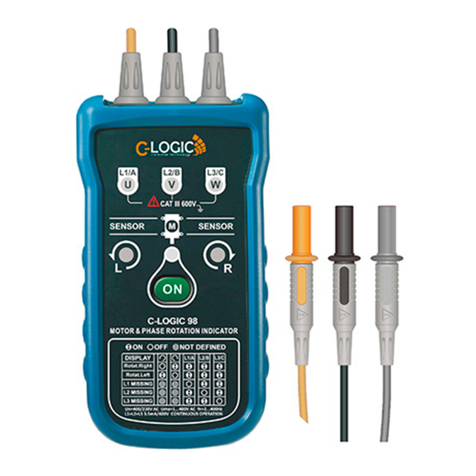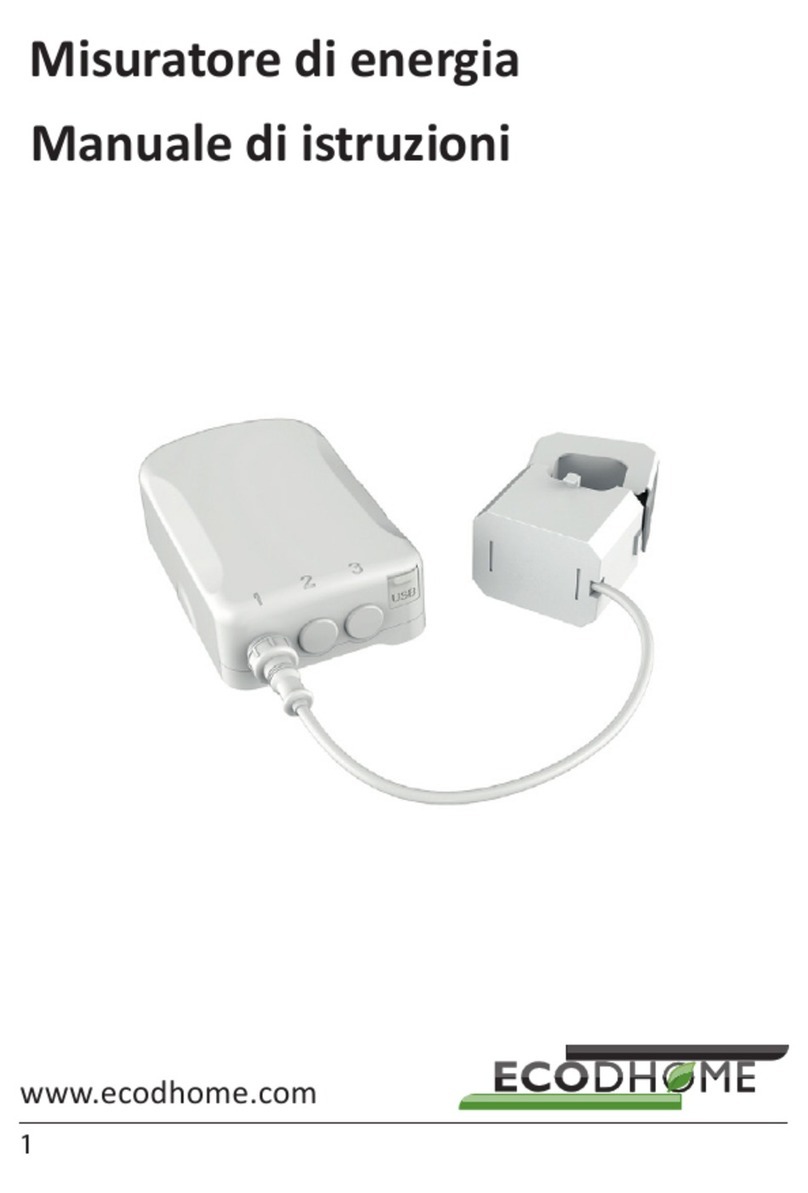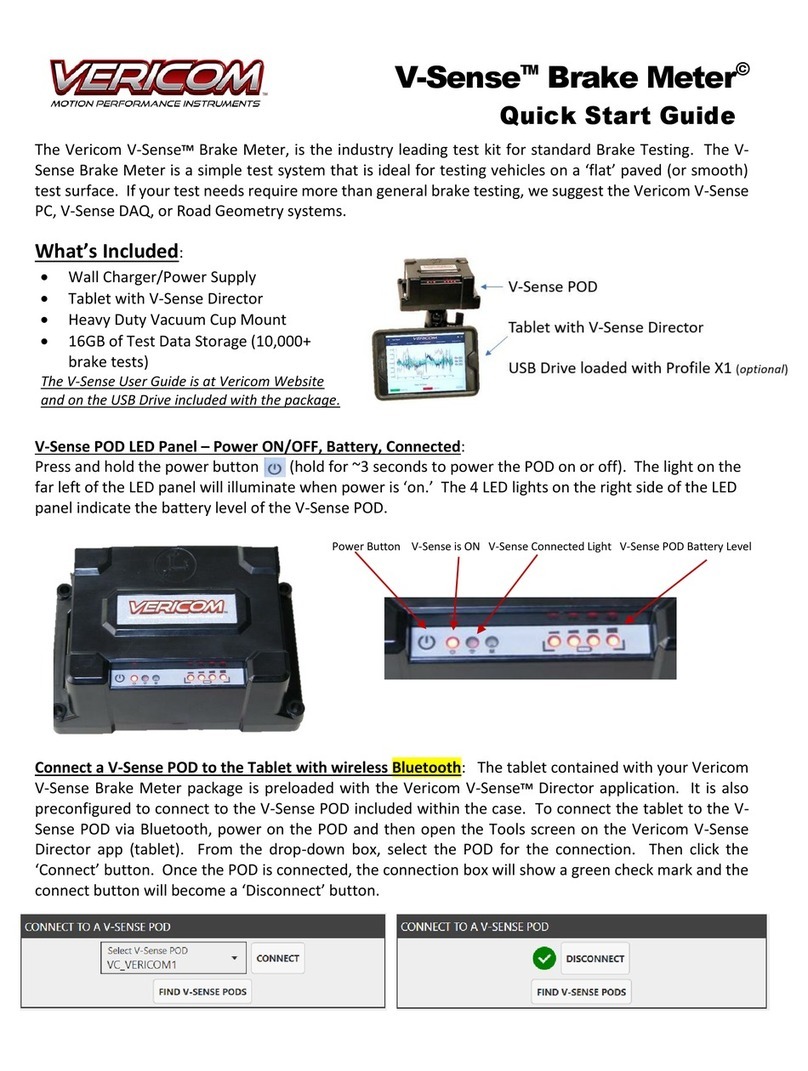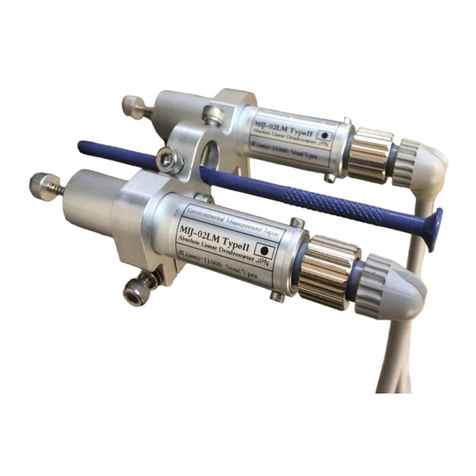beta sensorik Hansford Sensors HS-620 User manual

beta SENSORIK GmbH
Hummendorfer Straße 74 · 96317 Kronach
Telefon 09261 96607-0 · Fax 09261 96607-11
beta
SENSORIK
Vertriebspartner für Deutschland

HS-620/630 User Guide
QM14 Issue 4
HS-620/630 Vibration
Meter Kit
Operating Manual
Hansford Sensors Ltd.
August 2013
The HS-620 Vibration Meter Kit is an ideal low cost entry level vibration
monitoring instrument, designed for Maintenance Technicians to use on site,
helping to give protection to important plant machinery. The HS-630 adds an
easy to use temperature measurement function.
This document may not be reproduced in any way without the prior written permission
of the company.

HS-620/630 User Guide

HS-620/630 User Guide
-2–
QM14 Issue 4
Contents
1. OVERVIEW ______________________________________3
1.1 HS-620/630 Kit Contents ________________________________3
1.2 Overall Vibration Mode _________________________________3
1.3 Bearing Status Mode____________________________________3
1.4 Measurement Units __________________________________3
2. OPERATING INSTRUCTIONS ________________________ 4
2.1 Sensor Connection _____________________________________4
2.2 Power On/Off _________________________________________4
2.3 Key Functions_________________________________________5
2.4 Overall Vibration Measurement & Assessment _______________6
2.5 ISO Machine Groups ___________________________________6
2.6 Bearing Status Check ___________________________________7
2.7 Battery & Charger______________________________________7
3. THE ISO 10816-3 MACHINE VIBRATION STANDARD ______8
4. BEARING STATUS ASSESSMENT ____________________ 10
4.1 Bg Value ____________________________________________10
4.2 Bv Value ____________________________________________11
5. TEMPERATURE MODE (HS-630 only) _________________ 11
5.1. Surface Temperature Measurement_______________________12
6. SPECIFICATION _________________________________ 13
7.WARRANTY ____________________________________ 14
8. CERTIFICATE OF CALIBRATION ________________________14

HS-620/630 User Guide
-3–
QM14 Issue 4
1
Overview
The HS-620 Vibration Meter Kit is a reliable and easy to use hand-held
machine condition inspection instrument. It provides vibration measurement,
alarm indication and a bearing status check facility. The HS-630 kit provides
an additional facility for non-contact temperature measurement. The meter
enables plant maintenance technicians to monitor their machines, find
potential problems in advance of failure, and to ensure machine reliability.
1.1 HS-620/630 Kit Contents
VBA 20/VBA30 meter unit with lithium battery fitted
Hand Held Accelerometer with TNC Connector
80cm cable with TNC to BNC connectors
Magnetic Base
Vibration Spike
2 x Battery Charger (Mains +Car)
Manual
CarryingCase
1.2 Overall Vibration Mode
The meter can measure vibration Velocity in mm/s rms, Acceleration in
g peak, and Displacement in m peak to peak. When measuring
Velocity, and on switching to the ‘Hold’ mode, the meter display will
indicate an alarm status according to ISO10816-3.
1.3 Bearing Status Mode
The meter measures Bg value in g rms and Bv value in mm/s rms which
represent the bearing status. The lower frequency machine vibrations
are attenuated by a 1kHz high pass filter. In the ‘Hold’ mode, the meter
display indicates the bearing alarm status.
1.4 Measurement Units
The meters are available in three different configurations for
measurement units. These are: Metric 1, Metric 2 and Imperial. The
units required must be specified on order – see table on page 5 for units
used in each mode. Metric 1 settings are used throughout the manual.

HS-620/630 User Guide
-4–
QM14 Issue 4
2
Operating Instructions
Figure1.TheVBA20
2.1 Sensor Connection
Fit the vibration sensor to the machine measurement position via a
magnetic base or stud. Connect the sensor cable to the BNC connector
on the meter. When a satisfactory sensor connection is made, the
sensor fault icon on the LCD display will disappear. Conversely, the
sensor fault icon will appear if the meter detects a poor sensor
connection.
2.2 Power On/Off
Power On - Push SEL key only for sec. The meter defaults to the
overall vibration velocity range.
Power Off - Push two keys, SEL + BRG or SEL + VIB for 1 sec.
The meter will power-off on release of the keys.
The meter will automatically power-off after 3 minutes of no key
operation.
Integral cable
Hand Probe
with sensor
BNC connector
LCD Screen
VIB key
BRG key
SEL key

HS-620/630 User Guide
-5–
QM14 Issue 4
2.3 Key Functions
SEL key- Press SEL to switch-on the meter.
In the Overall Vibration mode press SEL to toggle through the
measurement parameter options:-
VIB key - Press VIB to toggle between Measure and Hold modes.
The Hold mode is indicated by an ’H’ in the display.
In the BRG mode Press VIB to enter the Overall Vib.
mode.
BRG key - In the Overall Vib. mode press BRG to enter the
Bearing Status mode.
In the Bearing Status measurement mode press BRG to
toggle between this and the Bearing Status Hold mode
indicated by an ‘H’ on the display.
When the overall velocity reading is in the Hold mode, the meter display
indicates the vibration alarm status of the machine according to
ISO10816-3 as defined in section 3.
When the BRG velocity or g reading is in the Hold mode the meter
display indicates the bearing status according to a rule-of-thumb
assessment as defined in section 4.
yeK3.2
snoitcnuFy
SEL yek
vOehtnI
erusaem
y- Pr sse SEL hctiwsot-ehtnom
sserpedomnoitarbiVllarev SEL
:snoitporetemaraptneme-
.retem
SEL ehthguorhtelggotot
BIV yek
-sserP BIV tebelggotot
The cidnisiedomdloH
erPedomGRBehtnI
.edom
edomdloHdnaerusaeMneewt
’naybdetac H.yalpsidehtni’
ss BIV iVllarevOehtretneot
.se
.b
BRG ek
htnehW
etacidni
801OSI
ye- dom.biVllarevOehtnI
.edomsutatSgniraeB
msutatSgniraeBehtnI
nasihtneewtebe
lggot
detacidni‘nayb Htno’
tnisignidaeryticolevllarevoeh
sutatsmralanoitarbivehts
61- .3noitcesnidenifedsa3
sserped BRG ehtretneot
sserpedomtnemerusaem BRG
domdloHsutatSgniraeBehtdn
.yalpsi
deh
eht,edomdloHehtretemalpsid
gnidroccaenihcamehtfo
ot
ed
ya
ot
eussI41MQ4
htnehW
yalpsid
mssessa
-5–
gnidaergroyticolevGRBeh
sutatsgniraebehtsetacidni
.4noitcesnidenifedsatn
em
omdloHehtnisiehtedtem
eluraotgnidroccas-of-muht
ret
bm

HS-620/630 User Guide
-6–
QM14 Issue 4
2.4 Overall Vibration Measurement & Assessment
At switch-on the meter defaults to the Velocity measurement mode, with
the units ‘mm/s rms’ indicated at the bottom right of the display.
If required, press SEL to select acceleration or displacement. Note that
no vibration assessment is available on these ranges.
When the vibration reading has settled, press VIB to move to the Hold
mode. An ‘H’icon is displayed.
In the velocity range the meter will then indicate either a tick icon for OK,
a single bell for vibration alert or two bells for danger.
The meter makes this assessment depending on the vibration level and
one of the four machine group options selected using the SEL key.
The machine groups are defined in ISO10816-3 and the meter
categorises these as ’ISO1&3-R’, ‘ISO1&3-F’, ‘ISO2&4-R’, ‘ISO2&4-F’.
R and F refer to rigid and flexible machine mounting respectively.
A label on the back of the meter gives details of the ISO10816-3
machine groups. The user can refer to this to confirm the appropriate
group number for the tested machine. The information contained is as
follows in section 2.5.
2.5 ISO Machine Groups:
Group 1 – Large machines rated power above 300KW; Electrical
machines with shaft dia. >315mm. Normally sleeve bearings, speed
120RPM - 15000RPM.
Group 2 – Medium size machines rated power 15KW < P300KW;
Electrical machines with shaft 160mm <dia.>315mm. Normally element
bearings, Speed above 600RPM.
Group 3 – Pumps with multi-vane impeller and with separate driver
(centrifugal, mixed flow or axial flow) with rated power above 15KW.
Group 4 – Pumps with multi-vane impeller and with integrated driver
(centrifugal, mixed flow or axial flow) with rated power above 15KW.
Support Class: R= Rigid Mount: F= Flexible Mount.

HS-620/630 User Guide
-7–
QM14 Issue 4
2.6 Bearing Status Check
Fix the sensor directly to the bearing housing as close to the bearing as
possible. Note that valid high frequency readings are unlikely to be
measured using hand pressure and the spike.
Press the BRG key to enter the Bearing Status mode.
Press the SEL key to select either Bg (g RMS) or Bv (mm/s RMS).
When the bearing status reading has settled, press the BRG key to
enter the hold mode (H). The bearing status reading is then held and the
rule-of-thumb alarm status displayed.
Press the SEL key to toggle through and select the appropriate speed
range of the bearing shaft. (rpm:<500, rpm:<1000, rpm:<2000,
rpm:<5000, rpm:<10000) .
The meter will then indicate either a tick icon for OK, a single bell for
vibration alert or two bells for danger.
The meter makes the assessment based on the rules-of-thumb defined
in section 4
2.7 Battery & Charger
The Vibration Meter is powered by an internal rechargeable Lithium-Ion
battery which can operate for 48 hours continuously following full
charge. The battery condition is indicated by an icon at the top right of
the meter display.
The battery charger supplied requires 3 hours to fully charge the battery.
An LED on the charger indicates the charge status, being orange when
charging and green when charging is complete.

HS-620/630 User Guide
-8–
QM14 Issue 4
3
The ISO10816-3 Machine Vibration Standard
Industrial machines covered by the ISO10816-3 standard include :-
Steam turbines with nominal power less than 50MW
Steam turbines with nominal power above 50MW with speeds less
than 1500rpm or above 3600rpm (ie. excludes machines included
in ISO10816-2
Rotating compressors
Industry gas turbines with nominal power less than 3MW
Centrifugal, Mixed flow, or Axial flow pumps
Electric Generators excluding Hydro-electric or pump stations
Electrical motors of all types
Blowers or fans
The standard classifies machine groups as in section 2.5 and defines
vibration levels for each group, shown in the chart on page 9, as follows:-
Green – levels expected for a new machine.
Yellow - levels considered as acceptable for long periods.
Amber - levels not acceptable for long periods.
Red – levels likely to cause machine damage.
It further classifies machines as being either rigid or flexible mounted with the
flexible mounted machines being allowed higher vibration levels. The meter
indicates a tick box for levels in the green and yellow sections and uses the
lower limit for the amber sections and the red sections in its vibration
assessment.

HS-620/630 User Guide
-9–
QM14 Issue 4
Fig.2 ISO 10816-3 Vibration Levels
The machine mountings affect the resonances related to the basic
running speed of the machine. Machines with rubber or spring
mountings often vibrate at low speeds following start-up, and as the
speed increases the vibration level is reduced. Such a machine is
considered to be flexible mounted.
Modern high speed machines having flexible bearing supports can also
be considered as flexible mounted even though not mounted on rubber
or springs.
A great advantage of using proper vibration measurements and
standards is that future maintenance requirements and costs can be
assessed reliably on machine commissioning. For example, if levels of
3mm/s rms are measured for a new machine, it is likely to require high
maintenance activity. The specific requirement of this is dependant on
the machine design and the advice of the machine manufacturer should
be sought.
amehT
gninnur
OSI2.giF 10816-3 iV
rehttce
f
f
ff
asgnitnuomenihca
aMenihcamehtfodeeps
sleveLnoitarbi
ersecnanosesabehtotdetal
nirpsrorebburhtiwsenihca
cis
gn
gninnur
nitnuom
ideeps
edisnoc
redoMn
snoceb
gnirpsro
taergA
dradnats
essessa
rs/mm3
netniam
cameh
t
aM.enihcamehtfodeeps
deepswoltaetarbivne
t
f
ft
osgn
ilevelnoitarbivehtsesaercn
derebot.detnuomelbixelf
lfgnivahsenihcamdeepshgih
evedetnuomelbixelfsadered
is
.sg
eporpgnisufoegatnavdat
ecnanetniamerutuftahtsisd
ssimmocenihcamnoylbailerde
mwenarofderusaemerasmr
q
ercificepsehT.ytivitcaecnan
tdnangisedenihctfoecivdaeh
nirpsrorebburhtiwsenihca
tratsgniwollofsd-htsadna,pu
enihcamahcuS.decuders
slanacstroppusg
niraebelbixel
bburnodetnuomtonhguohtne
nastnemerusaemnoitarbivr
stnemeriuqerbnacstsocdna
slevelfi,elpmaxer
oF.gninois
giheriuqerotylekilsiti,enihcam
otnadnepedsisihtfotnemeriuq
uohsrerutcafunamenihcameh
gn
eh
si
os
reb
dn
eb
fo
hg
no
dlu
eussI41MQ4
cameht
guoseb
-9–
tdnangisedenihctfoecivdaeh
.thg
uohsrerutcafunamenihcameh
dlu

HS-620/630 User Guide
-10 –
QM14 Issue 4
4
Bearing Status Assessment
When the rolling elements move inside a bearing, broadband noise and
vibration is generated. This increases if the bearing is not properly
lubricated, or is overloaded due to misalignment or damaged surfaces.
The bearing vibration Bg or Bv measured by the meter is the RMS value
of all high frequency bearing vibrations between 1kHz and 12KHz.
The vibrations below 1kHz are suppressed in the Bg and Bv modes to
eliminate the measurement vibrations caused by imbalance or
misalignment. A practical problem arises in gearboxes, and other
machines where steel meets steel, in which vibrations are produced in
the same frequency range as the bearing vibrations. For this reason
bearings should not normally be exchanged on the basis of a high
bearing value only. A high bearing condition value is an indication that
further analysis is required, and an FFT analyser will indicate if there are
frequencies corresponding to the calculated bearing frequencies.
4.1 Bg Value
Bg value is vibration acceleration within 1-12kHz in units of g RMS. The
reason for using acceleration is that it gives larger values at higher
frequency than velocity measurement. The rule-of-thumb assessment of
Bg is shown in the chart on page 10.
Fig.3. Bg Levels
4
sutatSgniraeB
nehWnilloreht
egsinoitarbiv
,detacirbulrosi
tnemsses
s
A
raebaedisnievomstnemelegn
ehtfisesaercnisihT.detarene
seuddedaolrevoemngilasimot
dnaesiondnabdaorb,gnir
ylreporptonsigniraebe
rotne.secafrusdegamad
bivgniraebehT
uqerfhgihllafo
snoitarbivehT
etanimileeht
tnemngilasim.
rehwsenihcam
uq
erfemaseht
sgniraebluohs
oeulavgniraeb
sisylanarehtruf
ocseicneuqerf
htybderusaemvBrogBnoitarb
ycneugniraebeewtebsnoitarbiv
nidesserppuserazHk1woleb
emt
nemerusaacsnoitarbiv
isesiramelborplacitcarpA
vhcihwni,leetssteemleetser
ivgniraebehtsaegnarycneu
degnahcx
eebyllamrontondl
.ylnonoitidnocgniraebhgihA
deriuqersis, ylanaTFFnadnas
bdetaluclacehtotgnidnopserr
ehretemeulavSMRehtsi
.zHK21dnazHk1ne
vBdnagBehtnsedomot
ybdesuaimroecnalab
rehtodna,sexo
braegn
nidecudorperasnoitarbiv
.snoitarbinosaersihtroF
hgihafosisabehtnod
tahtnoitacidninasieulav
seraerehtf
ietacidnilliwre
irae.seicneuqerfgn
4eulaVgB1.
rbivsieulavgB
nisurofnosaer
nahtycneuqerf
nwohssigBin
1nihtiwnoitareleccanoitar-k21
sevigtitahtsinoitareleccagn
.tnemerusaemyticolevelur
ehT
01egapnotrahceht.
tinunizHs .SMRgfoThe
sseulavregralrehgihta
e-of- fotnemssessabmuht
-10–
sleveLgB.3.giF
eussI41MQ4

HS-620/630 User Guide
-11 –
QM14 Issue 4
4.2 BV Values
Bv measurement is a long established method for detecting bearing
faults which gives reliable indication of bearing condition in 80-90% of
cases. The rule-of-thumb assessment used in the meter is as follows:-
BV 1mm/s - Healthy bearing, correctly greased
BV =1-2mm/s - Possibly damaged or un-greased bearing
BV > 2mm/s - Bearing seizure likely
5 - Temperature Mode (HS-630 only)
The HS-630 uses a thermopile infra-red sensor to indicate temperature in
Deg.C or Deg.F on the display. An alignment laser beam is provided to
indicate the area where the temperature is being measured. Ambient
temperature is also indicated in the bottom left of the display.
Fig.4. HS-630
Caution – Laser radiation - Do not stare into the Laser beam.
Integral cable
Hand Probe
with sensor
LCD Screen
TEMP key
SEL key
BRG key
VIB key
Laser Beam
BNC connector

HS-620/630 User Guide
-12 –
QM14 Issue 4
5.1. Surface Temperature Measurement
The temperature sensor measures the average temperature in a circle
of diameter one-eighth of the distance between the surface and the
sensor. For example, when the meter is held 1m from a surface, the
sensor will respond to a 125mm spot diameter on the surface. Thus, the
measuring distance will define the size surface to be measured. The
maximum recommended distance from surface to sensor is 2m and
hence the maximum spot diameter is 250mm. The measurement is
made as follows:-
Switch on the meter using the SEL key
Press the F/°C for the temperature mode
Aim the laser beam at the surface to be measured at a suitable distance
from the surface, remembering that the temperature sensor spot
diameter is one-eighth of the distance (ie not the laser spot size).
The temperature reading can be toggled between °F and °C using the
SEL key. Ambient temperature is indicated at the bottom left of the
display.
Exit the temperature mode by pressing the Vib or Brg key.

HS-620/630 User Guide
-13 –
QM14 Issue 4
6
Specifications
Input...................... Constant Current Accelerometer 100mV/g
Vibration............... Acceleration: 0-20gPk, Frequency Range 5Hz-12kHz
Velocity:0-200mm/s RMS, Freq. Range 10Hz-1kHz
Automatic Alarm Check: ISO10816-3.
Displacement: 0-2000m Peak-Peak,
Freq.Range5Hz-1kHz
Bearing: ................ Bg: 0-20 g RMS Freq. Range 1kHz -12 kHz Applies to
Bg line & Bv line.
Bv: 0-200 mm/s RMS, Freq. Range 1kHz-12 kHz
Automatic Alarm Check for BG and BV:Rule-of-thumb
Temp. Range: ..... -20°C to 120°C or -5°F to +250°F (HS-630 only)
Laser Guide: ....... Red, =650nm <1mW, IEC 60825-1 compliant
(HS-630 only)
Distance Range: .. For Temp. measurement 0 to2 metres (HS-630)
Accuracy: ............. +/-5%
Display: LCD
Power.................... Lithium rechargeable battery, 3.6V 1700 mAh,
Recharge time 3 hours, >48 hours continuous operation
Temperature......... Operation: -10°C to +50°C; Storage: -20°C to +60°C
Meter Sealing ....... IP54
Spike Length........ 75mm
Magnetic Base ..... Diameter 25mm, H 17mm, pull strength 12Kg
Meter Size............. L115mm x W 70mm x D 25mm
Carry Case Size ... W 342mm x D 265mm x H 80mm
Weight .................. Full kit including carry case 1.25 Kgs
Cable Length........ 0.8m (other lengths available)

HS-620/630 User Guide
-14 –
QM14 Issue 4
7 . Warranty
All goods are guaranteed against defects in materials and workmanship,
subject to specific exclusions, for a period of 36 months from the date of
purchase. In the event of failure within 36 months of original purchase, the
company will promptly repair or replace the defective components without
charge.
Specific exceptions rendering the Warranty void are:-
If repair is attempted by unauthorised persons or agents, or if the product has
been used for purposes for which it was not intended and or subjected to
abuse or wilful neglect. No liability can be accepted for loss of items or
component parts. It is expected that the user takes sufficient precautions to
safeguard all guaranteed items.
Hansford Sensors Ltd.
Artisan, Hillbottom Road,
Sands Industrial Estate,
High Wycombe, Buckinghamshire
HP12 4HJ, England.
Tel: + 44 (0)845 680 1957
Fax: + 44 (0)845 680 1958
Web: www.hansfordsensors.com

HS-620/630 User Guide
-15 –
QM14 Issue 4
>=<;:9:>8;=7697>85:4<8;:637
7
7
21701/.-,+7.*).7.*-(7'/&%$0.7*)(7#11"7.1(.1%7-"7
)00&/%)"017!-.*7&$/7 )"$,)0.$/-"7'/&01%$/1(7
$(-"70)-#/).1%71$-' 1".7./)01)#17.&77
").-&")7(.)"%)/%(7.&71"($/17.*).7.*17'/&%$0.7
11.(7.*17'$#-(*1%7('10-,-0).-&"(7
7
7
7
&%173&77 7 1/-)73&77
7
7
>)-#/).1%74+77 ).17&,7>)-#/).-&"77
7
7
)"(,&/%71"(&/(75.%78/.-()"7-#&..& 7<&)%7)"%(7
:"%$(./-)7=(.).17-*72+0& #174$0(777
.177777
,)77777
!1#7!!!*)"(,&/%(1"(&/(0& 7

HS-620/630 User Guide
Certificate of Calibration
Model No: ________________________
Serial No: ________________________
Calibrated By: _____________________
Date of Calibration: _________________
Certificate of Calibration
Model No: ________________________
Serial No: ________________________
Calibrated By: _____________________
Date of Calibration: _________________

HS-620/630 User Guide
Certificate of Calibration
Model No: ________________________
Serial No: ________________________
Calibrated By: _____________________
Date of Calibration: _________________
Certificate of Calibration
Model No: ________________________
Serial No: ________________________
Calibrated By: _____________________
Date of Calibration: _________________

HS-620/630 User Guide
Certificate of Calibration
Model No: ________________________
Serial No: ________________________
Calibrated By: _____________________
Date of Calibration: _________________
Certificate of Calibration
Model No: ________________________
Serial No: ________________________
Calibrated By: _____________________
Date of Calibration: _________________
This manual suits for next models
2
Table of contents
Popular Measuring Instrument manuals by other brands

WATANABE ELECTRIC INDUSTRY
WATANABE ELECTRIC INDUSTRY AP-301 Series instruction manual
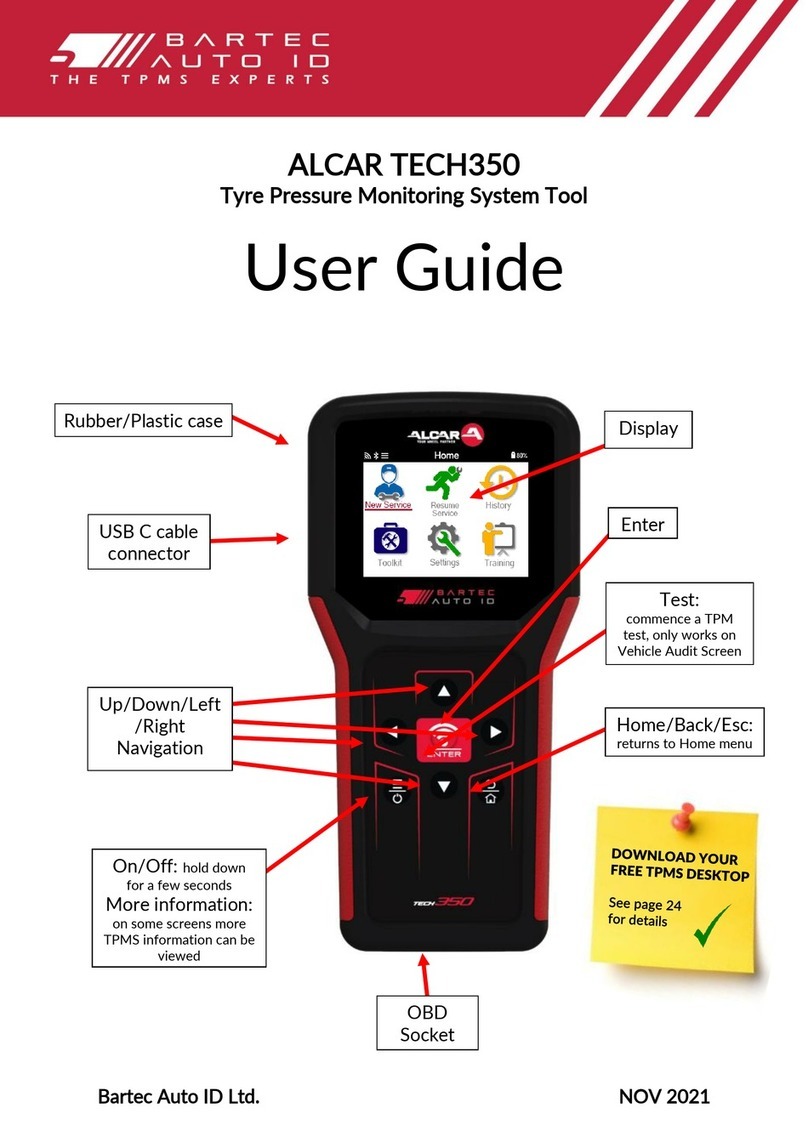
Bartec Auto ID
Bartec Auto ID ALCAR TECH350 user guide

Gossen MetraWatt
Gossen MetraWatt PROFITEST Master IQ Series operating instructions

Traceable
Traceable 5660 quick start guide

Transcat
Transcat ThermCal130 instruction manual
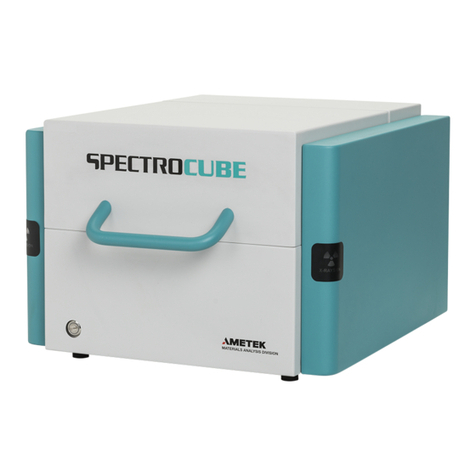
SPECTRO
SPECTRO SPECTROCUBE C XEP06C Original operating instructions

